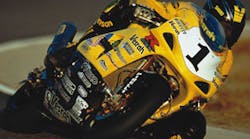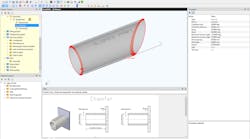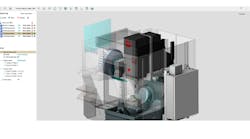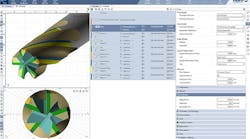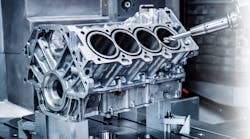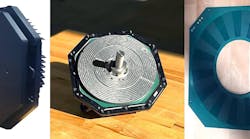You wouldn’t automatically think of any connection between high-performance racing and the moody sound of a saxophone, but of course both rely on complex systems demanding some expertise in the design and performance. There is also this common factor: Traxxion Dynamics in Woodstock, Ga., manufactures high-performance motorcycle suspension kits and components, and the shop’s owner Max McAllister is a former champion racer … and a professional saxophonist.
With a shop full of CNC machinery at his disposal, it should be no surprise that McAllister’s company manufactures both world-class motorcycle suspension components and world-class saxophone mouthpieces. Since 1998, Traxxion Dynamics has been manufacturing high-tech motorcycle components and upgrading motorcycle suspension components for Gran Prix, road racing, sport riding, cruising, touring, and all types of street-going motorcycles.
“We strive to provide the optimum suspension system available to each customer within his or her budget,” McAllister said, adding that Traxxion offers everything from complete suspension packages to services as simple as a seal replacement. “We do whatever we can to see that our customers get around the track faster than before, or down their favorite back road safer and more comfortably.”
Considered a “side product” by McAllister, the saxophone mouthpieces began being manufactured at Traxxion after his musical passion “connected me to a mouthpiece designer who needed precise, repeatable machining to make flawless mouthpieces.
“For the last hundred years, mouthpieces have started as a molded or machined blank, and are then finished one at a time, by an expert craftsman. As a result, no two were the exactly the same. That industry has turned to CNC machining as a result.”
To get the job done, the 14-worker shop uses Haas vertical milling and turning machines exclusively, paired with ESPRIT® computer-aided-manufacturing (CAM) software from DP Technology Corp.
Traxxion operates three vertical machining centers, two 5-axis models and one 4-axis design, plus three lathes, including two that are dual-spindled, live-tooled and bar-fed, and can be run ‘lights out.’
Traxxion primarily works with aluminum and stainless steel, in addition to brass, delrin, and other plastics, to make its complex range of motorcycle components and mouthpieces. All told, the range of part numbers it turns out ranges in the hundreds.
“We use the mills to manufacture billet motorcycle triple clamps, mainly for the Honda GL1800 Goldwing in both two-wheel and raked trike versions,” McAllister says. “We also use them to make dozens of components related to our suspension parts, and also quite a bit for secondary operations on our turned parts that the lathes cannot complete.”
They use the shop’s 5-axis machines to achieve the complex surfaces and intricate inner chambers of the saxophone mouthpieces.
In 2007, Traxxion purchased ESPRIT to take control of the shop’s demanding range of programming needs. Though the company had been using CAM software, its previous package was not able to handle dual-spindle machining.
“I needed to find software capable of running 5-axis mills and dual-spindled lathes,” McAllister recalled. “It seems like ‘everybody’ has great software for mills and lathes, but throw in two spindles or live tools and then the options are quickly narrowed to a few.”
Traxxion CTO Anthony Dickens has used ESPRIT since the software’s purchase date. According to Dickens, ESPRIT has been a significant time-saver for the company in part because of its ability to apply saved best-practice methods.
“Using existing tool lists and the ability to copy and paste existing features onto new part profiles are the most time-saving items,” he said. “Simply applying previously created features to newly imported solid models makes life so easy for the solid modeler in me. Also, the multi-selection of solids in FreeForm milling allows me to quickly build solid model boundaries in SolidWorks®, which is my forte for modeling packages.”
The combination of the strength of the ESPRIT postprocessor and interoperability between ESPRIT and computer-aided-design (CAD) software have been major pluses when it comes to saving time.
McAllister admitted, “I was extremely demanding of DP during the creation of our post processors. I am the type of guy who demands perfection. Their customer support and engineers stepped up and delivered.”
The inability to translate complex solid models into real-world machined parts is the “place where bad parts are born,” McAllister said. “ESPRIT helps us eliminate that area of woe.”
“Our most significant time savings comes in the move from a CAD solid model and the first completed part,” he indicated. “Once you have a finely tuned ESPRIT post processor for your particular machine tool, machining the first article can happen in a fraction of the time.”
Manufacturing of high-tolerance precision hydraulic damping units at Traxxion has undergone dramatic change since the implementation of ESPRIT. Most of the parts are generated via lathe and concentricity is critical.
“Having humans handle the parts in multiple operations introduces massive potential for error, so having lathes that can ‘hand off’ the part to a sub-spindle for completion is a must for us,” McAllister explained. “Programming the live tooling and sub-spindle was where ESPRIT really made a difference for us.”
McAllister’s machining philosophy at Traxxion is simple: “Don’t make bad parts”.
“That sounds obvious and patently silly,” he elaborated, “but when you own a machine shop you learn quickly just how easy it is for highly skilled, attentive, and caring machinists to make giant piles of junk parts that cost the company tons of money that we cannot afford to lose. Due to the complexity of our parts and the tremendous number of details on each part that can move in and out of tolerance, it’s very easy to make bad parts. We are constantly looking for ways to avoid making bad parts.”
Similarly, one word that terrifies any shop owner is “crash.” Machine crashes can have devastating consequences, including lengthy downtime, high repair bills and, worst of all, potential injury to the machinist.
“We use the ESPRIT ‘virtual dry run’ feature constantly,” McAllister reported. “Having your machines and tooling solid modeled takes time and costs money, but after that one time up-front investment, creating toolpaths and doing virtual dry runs of parts eliminates all of the wasted time that the machinist spends trying to ‘force’ a program to work at the machine, or worse, experience a crash. I mean, really: Do you want to crash your machine on your computer, or in your shop?
“After a clean virtual run, we use the detailed tooling reports that ESPRIT generates to help the machinists get the setup just right, and the net result is first-run parts with no crashes every time. That’s money in the bank.”
Before it had the right in-house machinery and sophisticated software, there was a time when Traxxion struggled to produce its parts, and it could not find reliable manufacturers for its parts.
“I was on the verge of closing my business because sourcing high-tolerance parts and having them delivered on time proved to be virtually impossible,” McAllister recalled. “I met with dozens of shop owners all of whom claimed they were ‘dying’ to find a customer like me.”
At one time, McAllister had $100,000 in purchase orders he required over the course of 180 days and the job shops he approached “would leave with the prints and I wouldn’t even get a quote.”
The rare few who did attempt to make one or two of Traxxion’s parts would promise delivery dates and then miss the scheduled delivery, “not by just a day or two, but sometimes by a month or two,” he said. “I was sick of being last in line at someone else’s machine shop. Against the advice of everyone I knew, I bought my first lathe and hired a programmer.”
That decision proved to be pivotal for McAllister’s company. “I don’t stand in anyone’s line anymore,” he declared. “Traxxion Dynamics is Customer No. 1 in my shop, and that has transformed us. ”
Having failed for five years to manufacture his dream of a revolutionary “drop in” fork cartridge, it took just six months after his first machine tool purchase for McAllister to walk into the Motorcycle Dealer Expo (the biggest annual trade show for the motorcycle crowd) with his completed product in hand. He introduced proudly to the motorcycling world in 2005 and his company has been advancing ever since.
“The machines set us free,” McAllister said.
Fast-forward a few years and the company now has even greater freedom. The pairing of machine with software than can maximize its potential leads to what any shop owner wants: more profit.
After pausing for a moment to reflect on his success, McAllister added, “It takes a lot of elements to make a machine shop successful: quality machinery, skilled machinists, skilled CAD designers, and skilled CAM programmers. The link between the solid model and the machinery is what we didn’t have. ESPRIT has filled that void and exceeded our expectations.”
